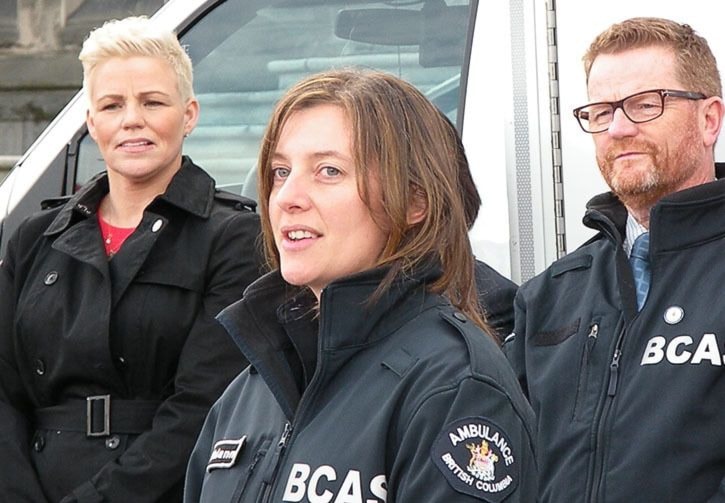The B.C. government is pledging to add 60 more paramedics and 20 ambulance dispatch staff over the next year, and complete the "rural paramedicine" program to provide non-emergency house calls in more than 70 rural communities.
There will be six additional ambulances stationed in the Lower Mainland to improve response times, with an unspecified number of additional ambulances in B.C. Interior communities, Health Minister Terry Lake announced Wednesday.
Funding for the increased services is from $91.4 million over three years added to the government's pre-election budget, presented in February.
Lake has been under pressure in the legislature for hospital overcrowding and wait times for ambulances and specialist treatments. He says the combination of a severe flu season, increased slips and falls from an icy winter in southern regions, and a rash of opioid drug overdoses have combined to strain the system province-wide.
The rural program was announced as a pilot project in April 2016 in six communities, Tofino, Ucluelet, Port Hardy, Cortes Island, Fort St. James, Hazelton, Chetwynd, Creston and Princeton. (List of all communities below.)
Rhiannon Davis piloted community paramedicine in Tofino, and started making home visits between emergency calls six months ago.
"The wellness check on a person's home could be assessing their blood pressure, monitoring their health status, or assessing fall risks," Davis said. "Other things that we do [include] leading a walking group, providing much-needed social and physical activity for people who may not otherwise feel safe to get out and do that by themselves."
Lake also announced a deal with the union representing ambulance paramedics, replacing on-call pay for rural paramedics with a "universal hourly wage" that takes effect April 7, giving part-time paramedics a raise. Details were not immediately available.
NDP health critic Judy Darcy said the increased resources are welcome news, but should not have waited until two months before a provincial election. The government's own report on ambulance needs recommended 25 more ambulances for the Lower Mainland, staffed 24 hours a day, Darcy said.
Lake said another innovation coming to the service is a "treat-and-release" approach to recognize that not everyone who calls 9-1-1 needs transport to a hospital. Paramedics will receive extra training to treat people at the scene, and clinical staff at dispatch to assess cases more accurately and reduce demand for non-urgent ambulance responses.
Communities to receive rural paramedicine service:
• Island Health region: Alert Bay, Cortes Island, Denman Island (including Hornby Island), Gabriola Island, Galiano Island, Gold River, Mayne Island, Pender Island, Port Alice, Port Hardy, Port Renfrew, Port McNeil, Quadra Island, Sayward, Sointula, Tahsis, Tofino, Ucluelet, Zeballos
• Northern Health region: Atlin, Chetwynd, Dease Lake, Fraser Lake, Fort St. James, Granisle, Haida Gwaii, Hazelton, Houston, Hudson Hope, MacKenzie, McBride, Kitwanga, Southside, Stewart, Tumbler Ridge, Valemount, Wells
• Interior Health region: Alexis Creek, Anahim Lake, Blue River, Clearwater, Clinton, Creston, Edgewood, Elkford, Field, Fruitvale, Gold Bridge, Golden, Greenwood, Kaslo. Keremeos. Lillooet, Logan Lake, Lumby, Lytton, Midway, Nakusp, New Denver, Princeton, Revelstoke, Riondel, Rossland, Salmo, Seton Portage, Sicamous, Sparwood, Winlaw
• Vancouver Coastal region: Bella Bella, Bella Coola, Bowen Island, Madiera Park, Texada Island
